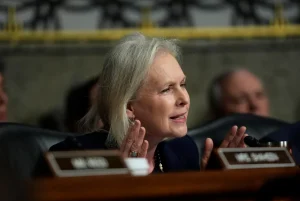Former President Donald Trump’s latest tax proposal aims to ease financial burdens on seniors by eliminating federal income taxes on Social Security benefits. This move is intended to provide immediate relief to retirees, potentially stimulating economic growth. However, while it promises short-term gains for some, a report from the Penn Wharton Budget Model warns of significant long-term risks.
According to the report, this policy would accelerate the depletion of the Social Security Trust Fund by two years. Additionally, it would disproportionately benefit wealthier, older individuals while shifting financial burdens onto younger and future generations.
Understanding Trump’s Proposal
Social Security remains a lifeline for nearly 68 million Americans, providing critical financial support to retirees, disabled workers, and survivors. A portion of Social Security benefits is currently taxed for individuals with higher combined incomes, contributing billions to federal revenue. Trump’s plan seeks to eliminate these taxes altogether.
While this tax relief would be a welcome change for retirees, it is not an across-the-board benefit. According to the Penn Wharton Budget Model, the proposal would:
- Provide the biggest benefits to high-income individuals close to retirement, particularly those in the 80th to 100th income percentile.
- Give the greatest boost to older millennials in their 40s who are in the highest income brackets, translating to a one-time lifetime welfare increase of approximately $12,400.
- Deliver significant advantages to wealthy retirees in their 70s, who could see lifetime welfare gains of up to $43,600.
- Negatively impact younger generations, particularly future retirees, by accelerating the depletion of Social Security funds, potentially leading to benefit cuts down the line.
Why Millennials Should Pay Attention
While older, high-income retirees stand to gain the most, younger Americans—particularly millennials in their 20s and 30s—may face financial hardships in the future due to this policy.
The Penn Wharton Budget Model predicts that unborn households, representing future generations, could see lifetime welfare losses ranging between $11,700 to $22,000. This means that younger workers today might pay into Social Security for decades, only to receive reduced benefits when they retire.
Maria Freese, a Social Security policy expert, cautions that while some millennials might benefit from short-term tax cuts, future retirees could be left scrambling to make up for lost income if the trust fund runs dry sooner than expected.
Diverging Opinions on the Proposal
Supporters’ Perspective
Some lawmakers and advocates argue that cutting Social Security taxes will provide much-needed relief to retirees and stimulate the economy.
Senator Roger Marshall (R-Kansas) stated:
“After four years of record-high inflation, the current tax on Social Security has been devastating to America’s retirees. By cutting these taxes, this bill will ensure seniors can keep more of their hard-earned money and fix a fundamental flaw in our tax system.”
Proponents believe that putting more money in seniors’ pockets will increase consumer spending, helping local economies and businesses thrive.
Critics’ Concerns
Opponents, however, warn that Trump’s proposal is a short-term fix that creates long-term problems.
Nancy Altman, president of Social Security Works, argues that while the tax cut would increase immediate benefits for some, it could ultimately undermine Social Security’s solvency:
“He’s talking about getting rid of the taxation, which increases the benefits, but the very benefits that are subject to taxation will be much reduced.”
Maria Freese echoed similar concerns, stating that if the Social Security Trust Fund runs out sooner, retirees—especially those who haven’t saved enough independently—could experience severe financial insecurity.
Alternative Proposals
Many Social Security advocates believe a different approach is needed to ensure the long-term stability of the program.
Maria Freese supports the Social Security 2100 Act, introduced by Rep. John Larson (D-CT). This plan would:
- Reduce taxes on Social Security benefits while ensuring revenue remains stable.
- Bring more funding into the program by requiring wealthier individuals to contribute their fair share in payroll taxes.
- Prevent premature depletion of the trust fund without cutting benefits.
Freese criticized Trump’s plan for eliminating taxes without offering a funding solution, saying:
“Trump’s proposal to eliminate the taxes on benefits that help keep Social Security solvent without paying for it breaks his promise ‘not to touch Social Security.’”
What Happens Next?
While Trump’s Social Security tax plan offers short-term advantages for wealthier, older millennials and retirees, its long-term effects raise serious concerns about sustainability. If implemented, the policy could accelerate benefit cuts for future retirees, forcing younger generations to adjust their retirement savings strategies sooner rather than later.
As the debate over Social Security’s future continues, policymakers will need to balance immediate tax relief with long-term program stability. Whether through targeted tax cuts, increased payroll contributions from high earners, or a combination of solutions, one thing is clear—millennials and future generations must pay attention to how these policies will impact their financial futures.
Disclaimer – Our editorial team has thoroughly fact-checked this article to ensure its accuracy and eliminate any potential misinformation. We are dedicated to upholding the highest standards of integrity in our content.




























+ There are no comments
Add yours